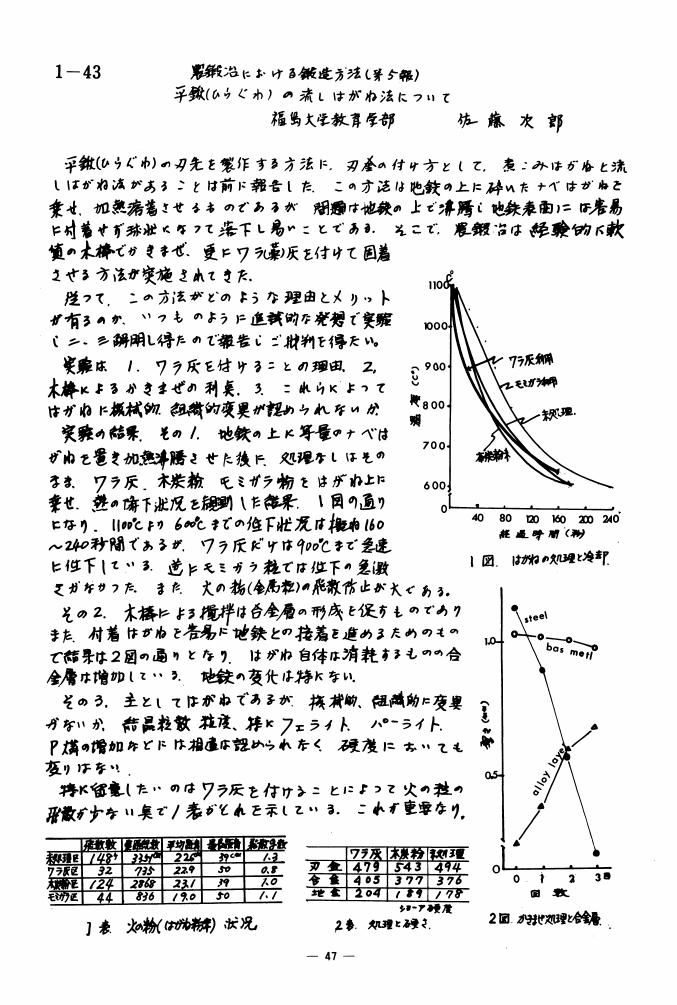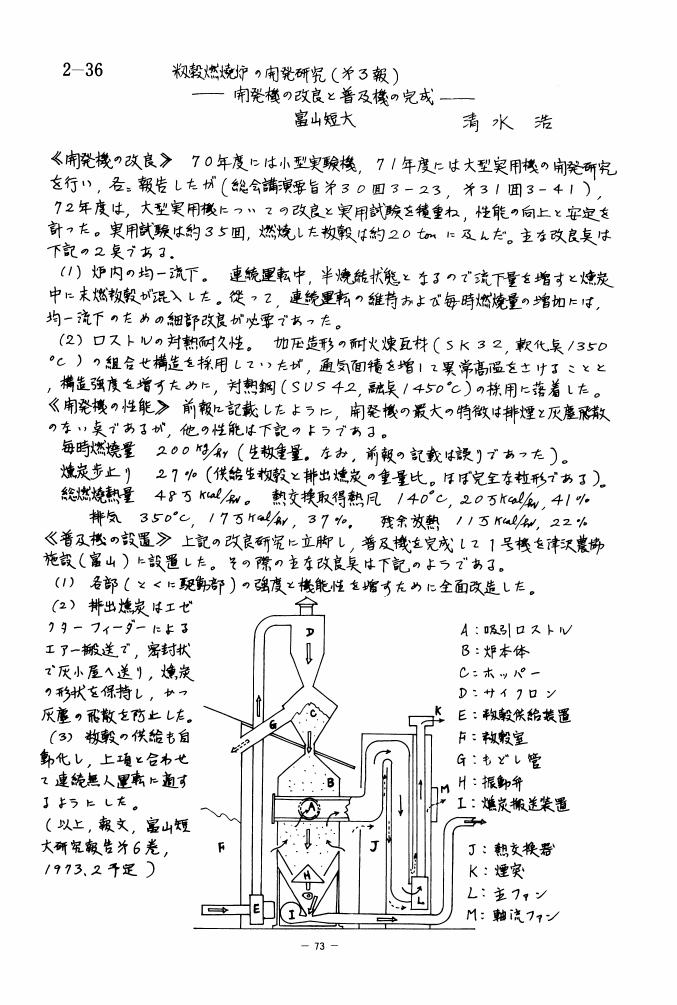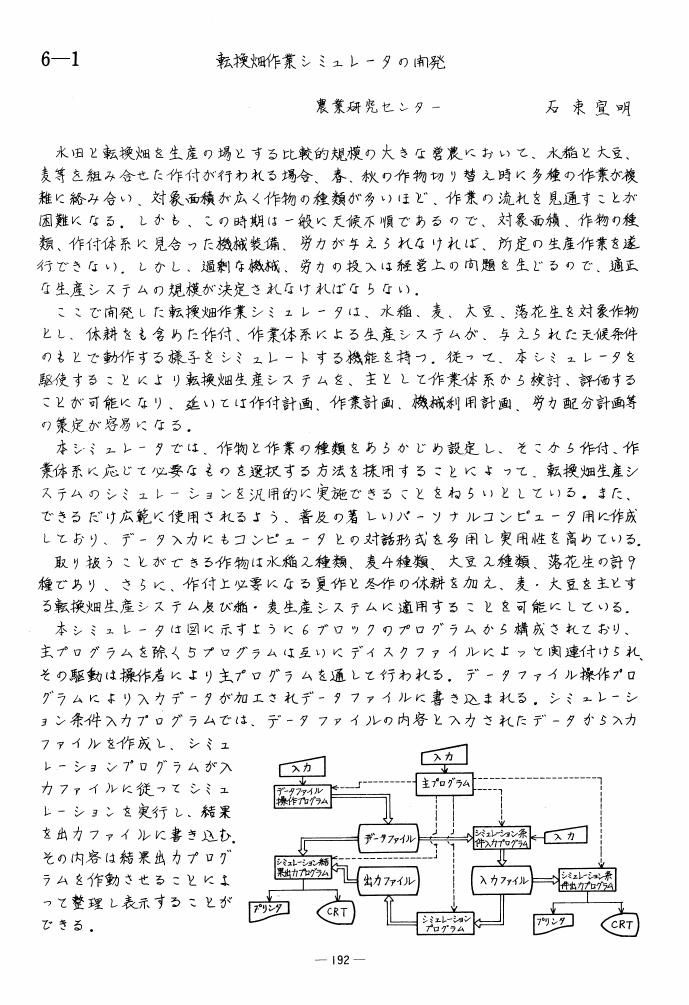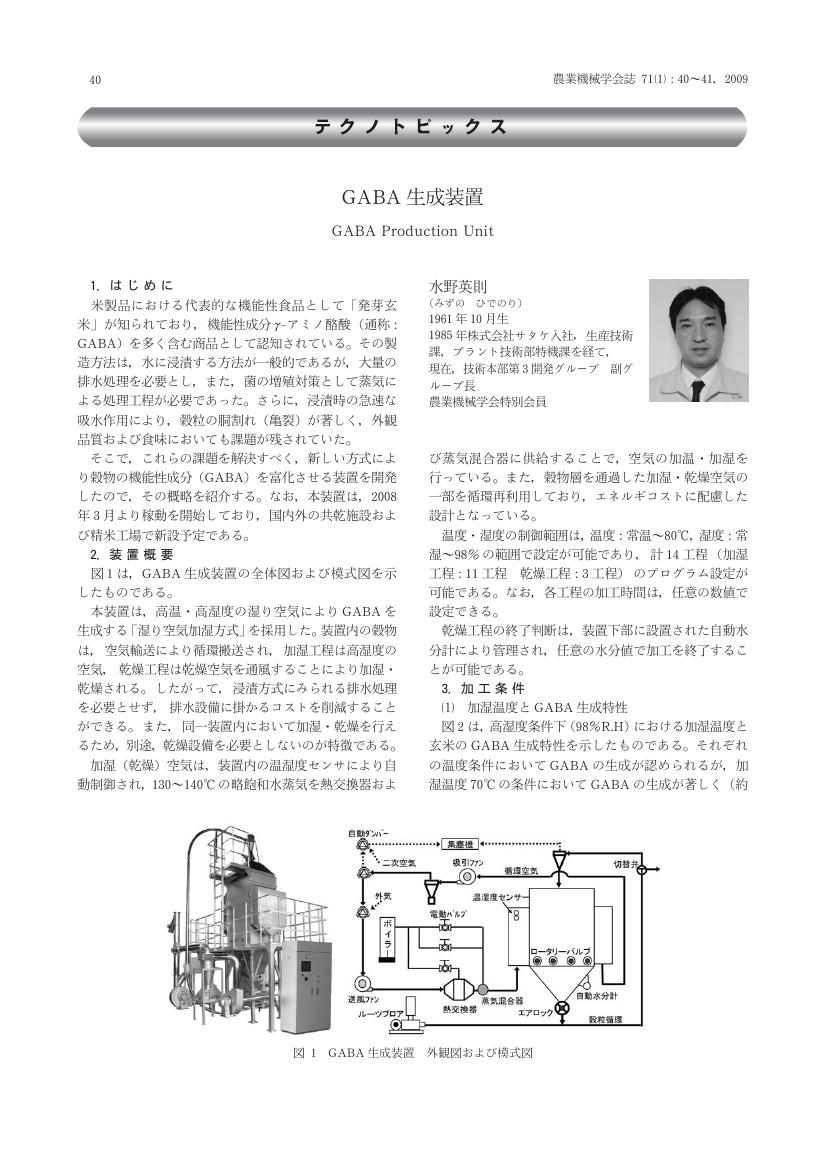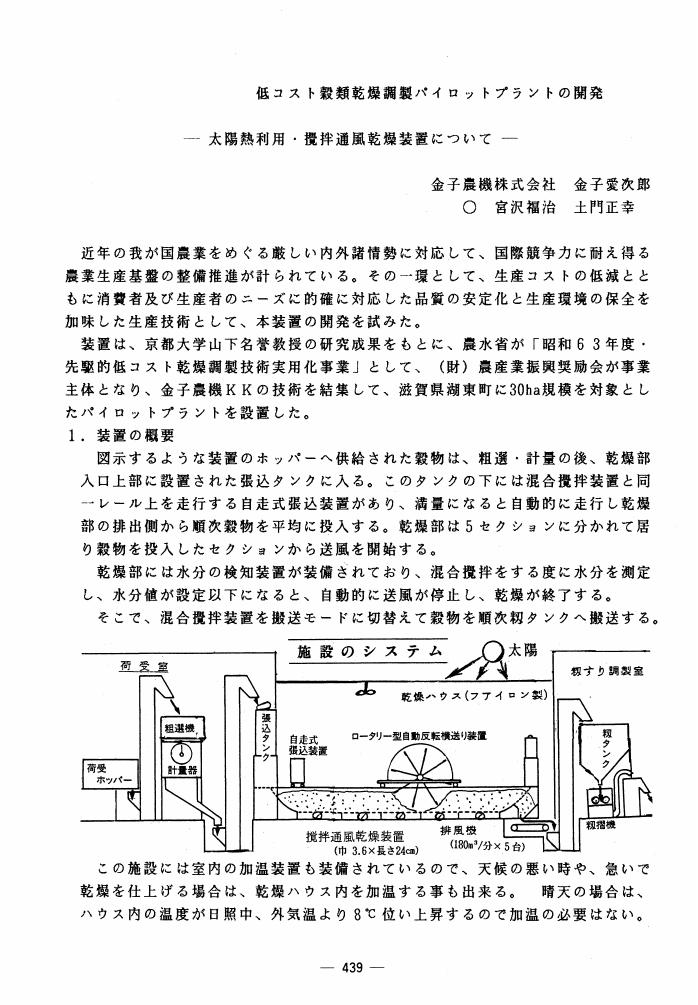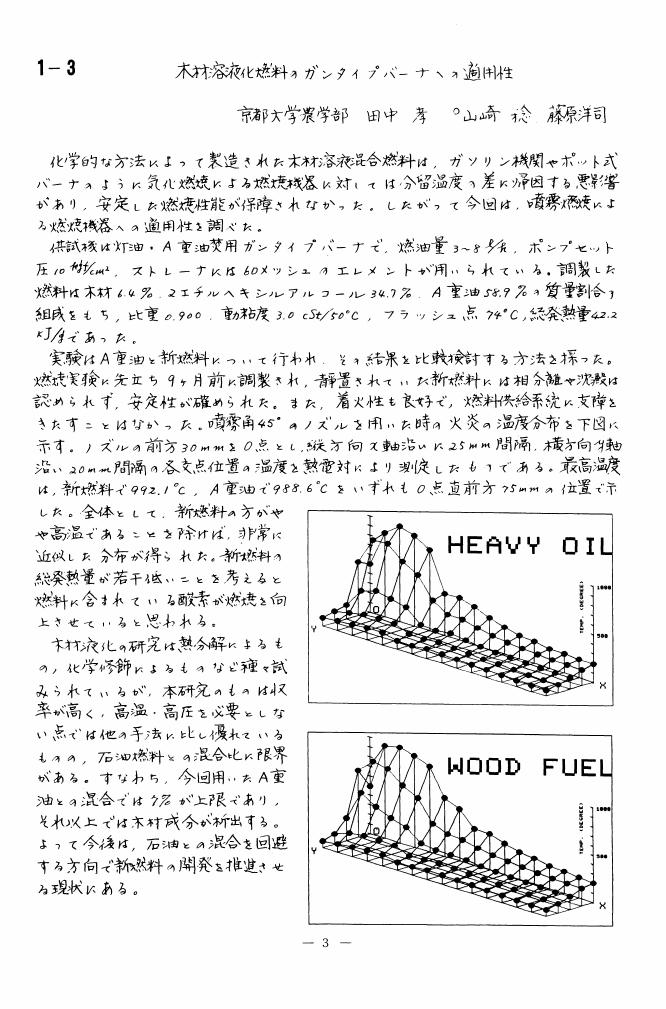1 0 0 0 OA 脱穀機の2番還元に関する研究
- 著者
- 江崎 春雄 今園 支和
- 出版者
- 農業食料工学会
- 雑誌
- 農業機械学会誌 (ISSN:02852543)
- 巻号頁・発行日
- vol.29, no.Supplement1, pp.97-97, 1967 (Released:2010-04-30)
1 0 0 0 OA マルチ技術の開発・実用化に関する研究
1 0 0 0 OA 米粒胚乳の応力緩和係数
- 著者
- 山口 信吉 山沢 新吾 若林 嘉一郎
- 出版者
- 農業食料工学会
- 雑誌
- 農業機械学会誌 (ISSN:02852543)
- 巻号頁・発行日
- vol.43, no.2, pp.239-245, 1981 (Released:2010-04-30)
- 参考文献数
- 13
米粒胚乳の応力緩和係数を求めるため, 前報と同様に円柱状の胚乳試片の単軸圧縮試験および応力緩和試験を行い, 次に示す結果を得た。(1) 米粒の長さ方向, 幅方向および厚さ方向の負荷試験より, 米粒はほぼ等方性であると認められた。(2) ひずみ約1%以内で, 米粒の粘弾性は線形を示し, 縦応力緩和係数E(t) およびせん断応力緩和係数G(t) を表す実験式は試片の温度と含水率の関数となる。(3) 米粒を熱および水分レオロジー的に単純な材料と仮定すると, 基準状態 (T0=293°K, w0=0.17d. b.) における応力緩和係数と換算時間の関係, すなわち, マスター曲線を表す実験式が得られた。
1 0 0 0 OA 選果機の精度と製品の重量管理について
- 著者
- 森島 博
- 出版者
- 農業食料工学会
- 雑誌
- 農業機械学会誌 (ISSN:02852543)
- 巻号頁・発行日
- vol.33, no.Supplement, pp.182-182, 1971 (Released:2010-04-30)
1 0 0 0 OA 農鍛冶における鍛造方法 (第5報)
- 著者
- 佐藤 次郎
- 出版者
- 農業食料工学会
- 雑誌
- 農業機械学会誌 (ISSN:02852543)
- 巻号頁・発行日
- vol.38, no.Supplement, pp.47-47, 1976-04-01 (Released:2010-04-30)
1 0 0 0 OA 籾穀燃燒炉の開発研究 (第3報)
- 著者
- 清水 浩
- 出版者
- 農業食料工学会
- 雑誌
- 農業機械学会誌 (ISSN:02852543)
- 巻号頁・発行日
- vol.35, no.Supplement, pp.73-73, 1973 (Released:2010-04-30)
1 0 0 0 OA 転換畑作業シミュレータの開発
- 著者
- 石束 宣明
- 出版者
- 農業食料工学会
- 雑誌
- 農業機械学会誌 (ISSN:02852543)
- 巻号頁・発行日
- vol.46, no.Supplement, pp.192-192, 1984-04-01 (Released:2010-04-30)
1 0 0 0 OA スイカの密度選果に関する研究
- 著者
- 加藤 宏郎
- 出版者
- 農業食料工学会
- 雑誌
- 農業機械学会誌 (ISSN:02852543)
- 巻号頁・発行日
- vol.61, no.Supplement, pp.327-328, 1999-04-01 (Released:2010-04-30)
- 参考文献数
- 3
1 0 0 0 微量,少量散布機に関する研究
- 著者
- 武長 孝 橋本 政雄 津賀 幸之介 梶山 道雄 橋本 佳文
- 出版者
- The Japanese Society of Agricultural Machinery and Food Engineers
- 雑誌
- 農業機械学会誌 (ISSN:02852543)
- 巻号頁・発行日
- vol.40, no.2, pp.169-177, 1978
この研究は諸外国でも開発が進められている農薬の微量, 少量散布機について, 昭和41年から始まり昭和52年の乗用トラクタマウント少量散布機の実用化, および低毒性の少量散布用農薬の登録受付けに至る間の基礎および開発研究を記述したものである。研究の内容は放射化分析を利用した農薬付着と漂流飛散の追跡, 有気噴頭の性能研究, 粒径の表現方法, 少量散布用落下調査指標の設定, 並びに8機種の微量, 少量散布機の開発研究からなっている。
1 0 0 0 OA 人工乾燥における穀物の電気的特性
- 著者
- 伴 敏三
- 出版者
- 農業食料工学会
- 雑誌
- 農業機械学会誌 (ISSN:02852543)
- 巻号頁・発行日
- vol.30, no.Supplement, pp.104-104, 1968 (Released:2010-04-30)
1 0 0 0 プラウパッカーの性能とその利用について
- 著者
- 佐藤 清美 中 精一
- 出版者
- The Japanese Society of Agricultural Machinery and Food Engineers
- 雑誌
- 農業機械学会誌 (ISSN:02852543)
- 巻号頁・発行日
- vol.27, no.1, pp.40-40, 1965
1 0 0 0 OA マルチセンシングデータ対応型生物情報解析システム
1 0 0 0 家畜ふん尿のたい肥化
- 著者
- 三浦 保 伊沢 敏彦 森本 国夫
- 出版者
- The Japanese Society of Agricultural Machinery and Food Engineers
- 雑誌
- 農業機械学会誌 (ISSN:02852543)
- 巻号頁・発行日
- vol.39, no.1, pp.93-95, 1977
1 0 0 0 OA 家畜ふん尿の堆肥化
1 0 0 0 OA GABA生成装置
- 著者
- 水野 英則
- 出版者
- 農業食料工学会
- 雑誌
- 農業機械学会誌 (ISSN:02852543)
- 巻号頁・発行日
- vol.71, no.1, pp.1_40-1_41, 2009-01-01 (Released:2011-02-14)
1 0 0 0 OA 根株処理機械の開発研究 (第2報)
- 著者
- 田中 勝千
- 出版者
- 農業食料工学会
- 雑誌
- 農業機械学会誌 (ISSN:02852543)
- 巻号頁・発行日
- vol.58, no.6, pp.3-12, 1996 (Released:2010-04-30)
- 参考文献数
- 6
片刃のナイフに作用する曲げ荷重の大きさと向きを調べることによって, 片刃のナイフ形状と実作業との関わりを検討し, 両刃と比べた場合の片刃の利点を示した。また, 切断時に片刃の切刃に発生する曲げ応力について, 刃面圧力センサの測定値を用いる方法と, 抵抗線歪みゲージをナイフに直接接着し, 測定された曲げモーメントを用いる方法の二通りで求め, 切刃の形状を検討した。刃先角が小さいほど曲げ応力は大きく, 刃先角25°のナイフでは300MPaとなった。切刃先端の強度を維持しつつ切断力を低減するために, 片刃の切刃の形状を二段刃とすることを提案した。
1 0 0 0 OA 北海道における農作業事故の分析
- 著者
- 高井 宗宏
- 出版者
- 農業食料工学会
- 雑誌
- 農業機械学会誌 (ISSN:02852543)
- 巻号頁・発行日
- vol.37, no.3, pp.425-431, 1975 (Released:2010-04-30)
- 参考文献数
- 6
Number of death and injury from the farm accidents in Hokkaido increases exponentially by year in proportion to the propagation of large farm machinery. The death and injury rate are 1.9 and 27.5 respectively per 10, 000 workers in 1974.This analysis was held to get information for safety work which is derived from 1663 accident cases in last two years.1) About 9% of the reported accidents are the animal-related injuries. And apporoximately 12% are occurred in burn and other structures around farm, and most of them are slip or falls of the workers (Table 2).The remaining 79% are the machine-related injuries (Table 3, 6, 7).2) The tractor and it's implements are involved in 36% of the total injuries. Over-turns and runover of the tractor have the highest fatality rate for the machine-related injuries. While transporting job are involved in 11%, and over two third of them are due to falls on the different level.The remaining 31% are due to stationaly or selfpropelled machines.3) Less than a third of all injuries were due to “falls” of man on the same or different level, and being “struck by” or “caught in” the machine parts accounted for nearly another one third of the all injuries.4) The information of labour scientist will be a great help in producing the program of accident prevention.
1 0 0 0 OA 低コスト穀類乾燥調製パイロットプラントの開発
1 0 0 0 OA 木材溶溶化燃料のガンタイプバーナへの適用性
1 0 0 0 OA 農鍛冶における鍛造方法 (第2報)
- 著者
- 佐藤 次郎
- 出版者
- 農業食料工学会
- 雑誌
- 農業機械学会誌 (ISSN:02852543)
- 巻号頁・発行日
- vol.34, no.4, pp.385-391, 1973-03-01 (Released:2010-04-30)
- 参考文献数
- 9
With the progress of power farming, the number of farmer's blacksmithies has been decreased every year, as their main jobs ars to produce and repair Japanese-hoes. But I believe that their traditional technique is unique and excelent, and worth transmiting.Following is the representative process and technique of producing Japanese-hoes by farmer's blacksmithies in Fukushima prefecture.1) SS4IP, soft steel is used most often as the base steel of the hoes. Tamahagane (steel made from iron sand), Nabehagane (pan-bottom substitute for steel) and Zenihagane (coin substitute for steel) are used as the substitute for hard steel, and Nabehagane is used most often among them. Nabehagane and Zenihagane, so called by farmer's blacksmithies, are both old cast irons.2) Pine-charcoal or Chestnut-charcoal are always used in forging, as the temperature of heating rises rapidly with them. Most tools for forging are self-makes by farmer's blacksmithies.3) Ordinarily, Japanese-hoes are made through five steps, that is, preparing, cutting, forging, quenching, and finishing, and the process consists of eighteen unit operations. The main operations of them are marking-off, chiseling, drowing down, teyori (twisting), tewari (cutting), forge welding, and quenching. The operation of forge welding consists of crushing Zenihagane of Nabehagane into small pieces, placing them on the base steel, and melting them by heating over 1100°C. After then the welded steel is forged ten to twelve times. Quenching is the operation of heating the hoe up to 850°C and putting it into water of 30°C. Forge welding and heat treatment are the most delicate techniques in making hoes.



